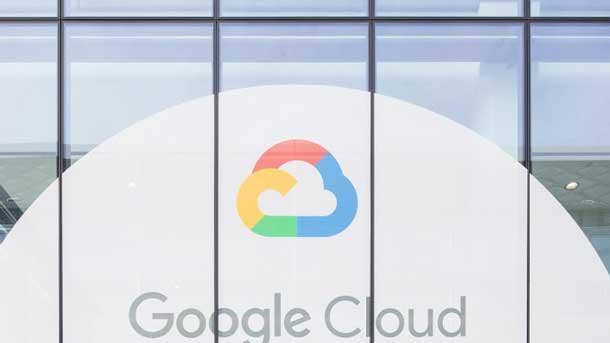Nasuni Founder: COVID-19 Accelerating Move To Cloud-Only
‘What COVID is making really clear is that the physical world can be a liability. In the case of infrastructure, we knew that. This is why the whole cloud thing was started to begin with,’ says Nasuni founder Andres Rodriguez.

COVID-19 And The Power Of The Cloud?
The COVID-19 coronavirus pandemic and the subsequent work-from-home rules caught way too many businesses off-guard, forcing them to quickly migrate much of their employees from offices where they enjoyed relatively secure, relatively high-speed internet access to work full-time from their bedrooms, kitchens, and dens where security and access was lacking.
Andres Rodriguez, founder and CTO of Nasuni, a Boston-based developer of scalable NAS and cloud file systems, told CRN that the rush to work from home was a wake-up call to businesses, causing them to re-examine their dependence on on-premises and cloud infrastructures and find ways to ensure the issues caused by COVID-19 are not repeated in some future pandemic or other disaster.
For Rodriguez, that means businesses will be shifting more of their applications and data to the cloud, and transitioning from a cloud-first to a cloud-only architecture. He acknowledges earlier moves to the cloud had issues, but argues that the technology is now ready and businesses will have no choice but to make the move.
For a look at one possible future for data storage and the cloud, turn the page.

So, what's the latest with Nasuni?
[In 2019,] our annual recurring revenue jumped almost 50 percent, a 44 percent jump. We have 500 enterprise customers, with almost 80 petabytes under management right now, which is massive. When you and I started talking several years ago, we were in the single-digit petabytes. So to be here now is just tremendous.
We added two board members. One of them very dear to my heart is Joel Reich, the ex-VP of products at NetApp. He and I had a lot of very good discussions about where to take Nasuni and what things NetApp did right and what they didn't do so good, and what transitions were difficult for NetApp. It's incredible help. And then Peter McKay, who was the co-CEO of Veeam for a while, more of a sales background kind of guy. They were brought in by Paul Flanagan, now the CEO of Nasuni, who used to be one of my top investors and is now running the day to day of the company.
How has the COVID-19 coronavirus pandemic impacted Nasuni?
Pretty much everything that was already in play when it comes to the cloud has now been accelerated with COVID. What COVID is making really clear is that the physical world can be a liability. In the case of infrastructure, we knew that. This is why the whole cloud thing was started to begin with, to try to centralize and give scale and availability to the core services that run IT. ...
This is the sort of scenario that I don't think any of us with decades of experience anticipated. The simultaneous failure and inability to access the physical premises where you and your employees do most of the work, if not all of the work, is unprecedented. This is not the classic scenario where you have one site fail over to another site. This is a scenario where every single site all of a sudden becomes inaccessible. Your own IT staff have a hard time accessing their own data center. And you have to continue to provide IT services to organizations that may have 10,000, 100,000 employees around the world. And so it's really shed a light on anything that can continue to work through a disruption of that magnitude.

You talked about data center sites being inaccessible, and said the cloud helps mitigate that issue. Yet the cloud also resides in data centers. What's the difference?
Cloud is not a location. Cloud is not a specific data center, or just a bigger data center. The thing that makes cloud unique is, it's automatic. The entire system is designed to run on its own so that very, very few people with very few resources can run systems at a scale that you could never do in your own data centers. So by far the most valuable thing in these circumstances is the fact that everything that we design for cloud and cloud architecture has been designed to run autonomously. For instance, many of our clients will have tens of sites around the world where they run Nasuni. In a traditional model, if those were something like NetApp Filers, you would have to keep watching, are the disks full? Are the backups running? Are the snapshots and mirrors running? If you're running a cloud architecture, none of that is your issue. The software is automatically managing all of that. So you don't need anyone to be babysitting the file servers at all those locations. ... The cloud runs itself. It was designed from the get-go to run itself because nothing that big could be run by people.
Do you see any longer-term impacts COVID-19 will have on moving to the cloud?
[The final transition is happening,] from cloud-first to cloud-only. That is, clients want to get completely out of the data center business. And again, it's an architecture, it's not a location. This is not MSP-light. This is not like someone else is going to run our operations, or we're outsourcing IT, none of that. It just means that the core infrastructure services, at the server level, networking level, and storage, are all going to be run directly in the cloud. We've seen major manufacturers, media companies, oil companies go to a model where their entire data center is now in either AWS or Azure....
COVID has only increased the velocity of that transformation. Because what you're seeing now is, those same customers that wanted to get out of the data center and use a global cloud model for delivering IT services to their users are now saying, 'It's not just the data centers that are a liability. It's not being able to deliver a uniform, uninterrupted level of service to all of our employees even through major physical disruptions that's a liability to the company. It puts the brakes on our business, and we don't want that.'
I think a lot of people got caught flat-footed by this incident. It's unprecedented. I do not believe any responsible large organization will get caught flat-footed again. We are going to adapt. And that means a complete exodus to the cloud for all infrastructure.

Yet we're also seeing that a lot of businesses that moved to the cloud are pulling back in part because not everything they do is best served via the cloud. So what do you mean by cloud-only environments?
I think there were somewhat early moves that were unsuccessful because they were rushed and not thought through carefully. The best way to think about it is just like virtualization. With virtualization, you had to get to a certain level of capabilities in the hypervisors before you could virtualize pretty much everything in the data center. The same thing is happening now with software-defined everything. You have to be virtualized, and then everything in the stack has to be software-defined, and then you can move it to the cloud. If those conditions are met, then the journey to the cloud can be very non-disruptive to the business. Certainly what I have seen is, when an organization goes through every one of their IP services and checks the box whether this is software-defined capable by now, and those boxes come out all as checked, then you're ready for a full movement to the cloud. I think any organization that doesn't do that in a in a rigorous, in a full, complete way, is going to be surprised. That's where you get the horror stories. But in general, file services are one of the most difficult things to move to the cloud.

What is Nasuni seeing from its clients?
Nasuni has had a hybrid model for years. But we are probably seeing somewhere around a third of our Nasuni appliances deployed directly in the cloud, which is a direct reflection of how much of the infrastructure is already present in the cloud. Everything from directory services to workstations to the applications themselves, the servers, are running up there. And by and large, those clients end up with a much better experience performance-wise, propagation-wise, scale-wise, and the ability to spin things up and down as the business ebbs and flows in a way we couldn't have dreamed of before. It's that architectural shift.
But a shift to the cloud can be very expensive compared to on-prem which is again is a reason why a lot of companies may retreat from the cloud. ...
I don't believe that we're gonna wake up tomorrow and everyone is going to be in public cloud only. But I will bet you that two years from now, if anything like [COVID] happens again, the majority of large organizations will be able to spin up their entire environments in the public cloud. It's too compelling a value proposition not to take advantage of it.

What is Nasuni doing on the channel side?
[In May we relaunched] our channel with a big update to the channel program that I think will be great. We put an all-new team around it. It's awesome. It has a lot more training levels and incentives. I'm a huge fan of getting the channel to work side-by-side with us. And we've started training channel partners to do our professional services. This includes both the architecture for the cloud, like how to build this very large cloud system, and the migration. So our partners are now doing a lot of that work that used to be done by Nasuni.
How important is the channel to Nasuni?
About 90 percent of our business comes through the channel. We get about 70 percent of all deals coming through the channel and the alliances programs that we run. And about 75 percent of the deployment that we're doing, and this is the big change, are done with either AWS or Azure and their ecosystem partners. That is, those guys who have moved to a model where basically they are shepherding their clients to their environment and the channel is following, essentially being the advisors of the transition. So we're typically working very, very closely with AWS or Azure. Many times they're the ones that brings us to the table, and then the channel has a supporting role helping with the whole transformation.

You talked about the AWS and Azure. What about working with Google Cloud Platform?
We see Google as a third option, particularly for media users who are cost-sensitive but have massive, massive capacity issues. They're typically the ones that have multi-petabyte systems. You touch a video and you're going to explode the petabytes at a large media company. So we see Google there for companies that want to have a second option to either AWS or Azure that's really inexpensive. We have not seen them as a [big] partner yet in infrastructure. That could change, but I think that AWS is far ahead and Microsoft is trying to catch up as hard as they can. [And] below Google, there's no one else. No one else of significance. We see zero action.
Is Nasuni profitable or cash flow positive yet?
Not yet. [Our financial model is] predicated on us having large accounts that start small and then expand. And they grow and grow and grow as their data grows. And as they grow, their contracts grow. And it's just a steady increase. And we're also in an unassailable position in that we're the only company that can give you a global file system at scale, as a service, in the cloud. Azure is at least half a decade behind us, and Amazon doesn't even have anything that compares.
So it's a good model. The customers stay with us, they increase capacity in their contracts by about 30 percent every year, and the company just grows with a kind of double flywheel where we acquire customers and they expand within the next three, five years at a very good, predictable pace. So investors like it.

Does Nasuni have enough cash in the bank now to run through to profitability or do you expect to need another funding round?
We have it, but the question is, do we keep accelerating the business or do we focus on getting cash flow positive. And for seven years, we've had that luxury, and we've always chosen to accelerate the business. So we keep we keep moving the target for break-even farther and farther out. Which is fine, because we keep expanding year after year.
Will you need another round of funding?
It depends. It would be a very late stage or mezzanine-type round, if we go in that direction. Who knows what path the company takes in the next two years, but I'm very optimistic. The world will come back online and the cloud will accelerate, which means we should be in a great position regardless of whether we need a much larger round or whether we feel we're ready to go public. Those would be great options to have in our future.